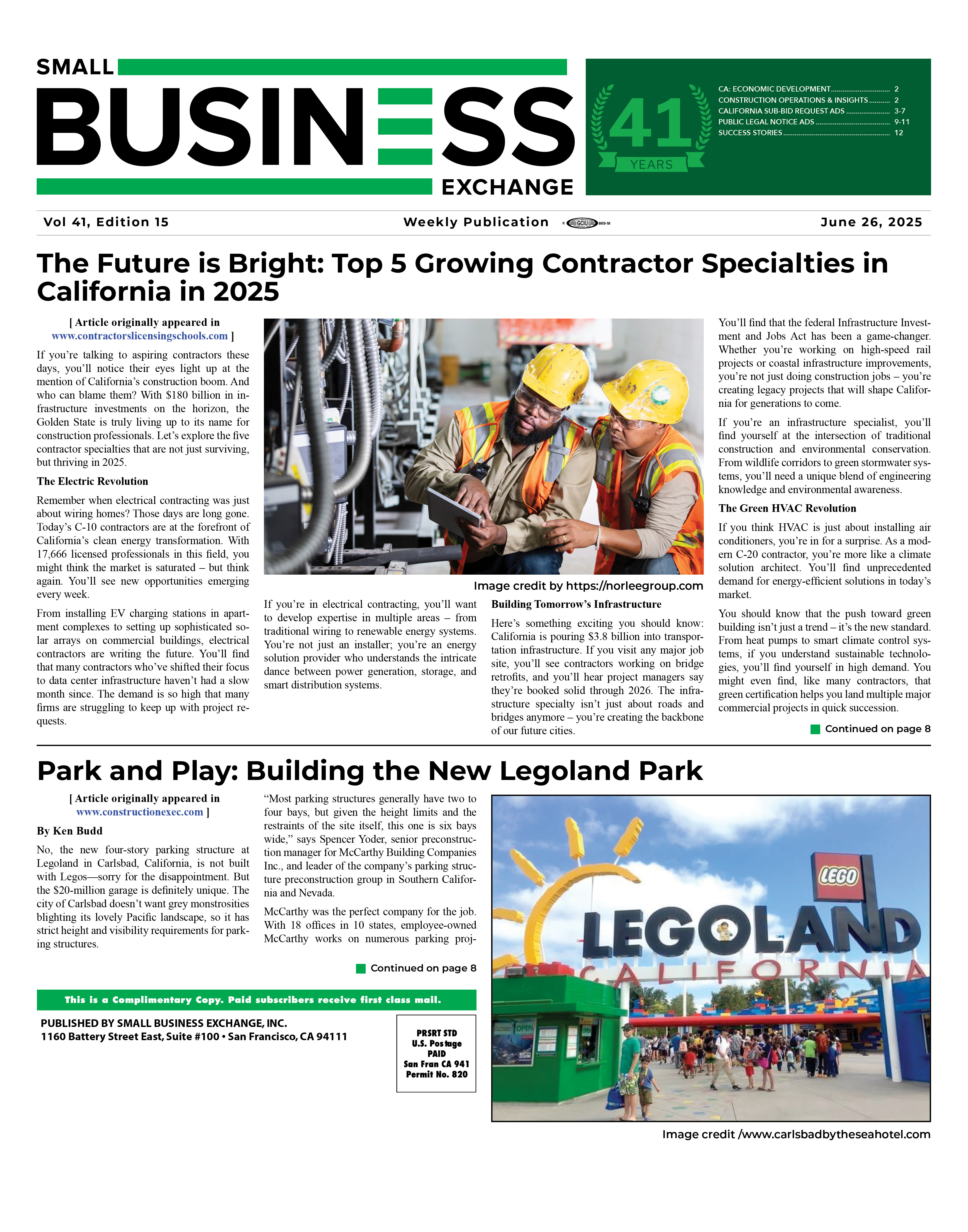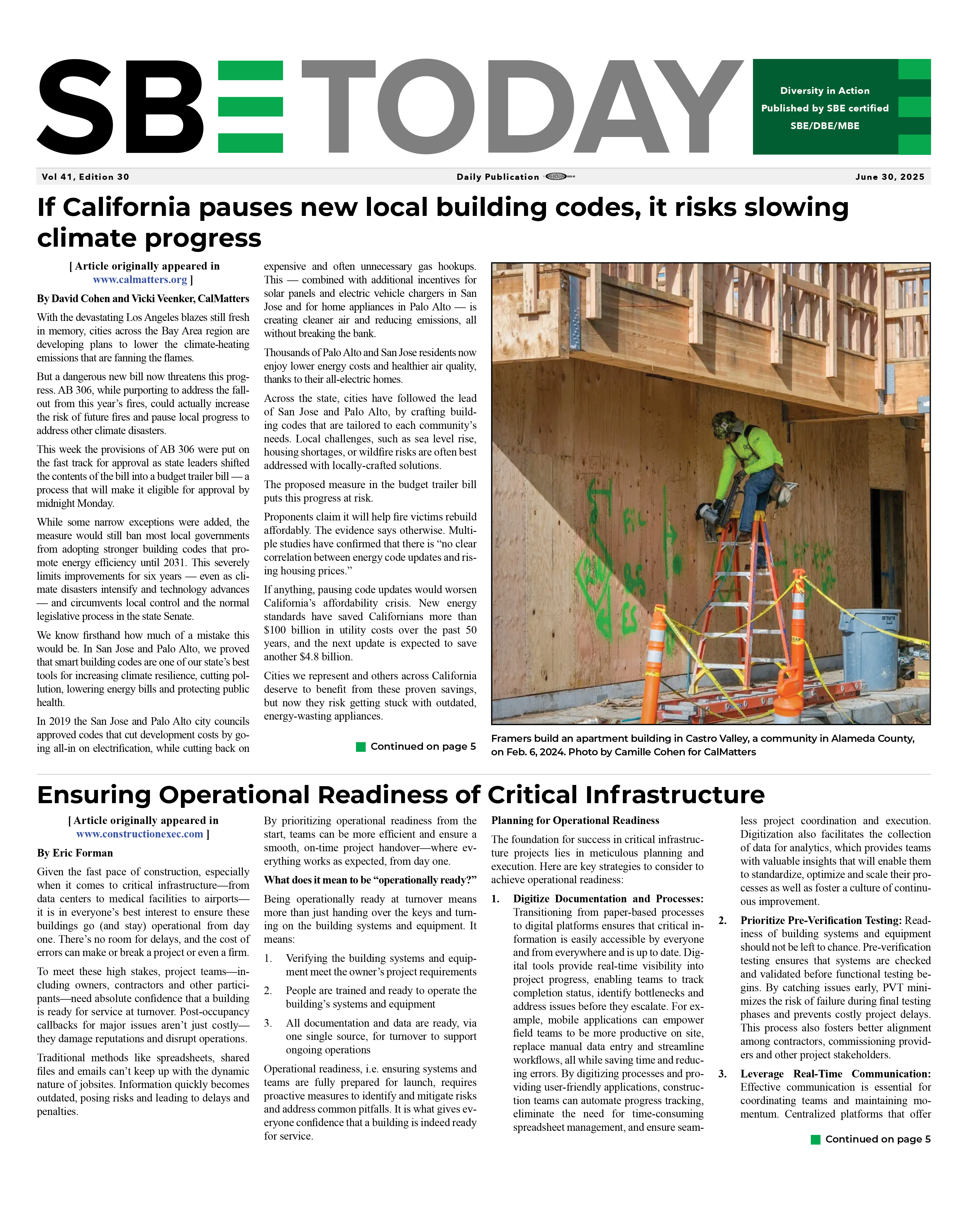|
|
8 Common Construction Estimating Mistakes
05/20/2019
Estimating is one of the most difficult jobs in construction. It is also one of the most important. Profits are typically won or lost based on how accurate your estimates are and how closely they match up to your final project costs. So, how accurate are your estimates? According to a recent survey from QuickBooks and TSheets show that nearly a third of construction companies make less profit than expected based on their estimates. That’s not too surprising given that 40% of respondents aren’t that confident in their estimates. Chances are that one bad estimate on a project that loses money won’t put you out of business. String together a couple of unprofitable projects and you might find yourself closing the doors for good. A quarter of all respondents indicated that it would only take two or three bad estimates to ruin their business. Getting accurate estimates is no easy task and a good estimator is worth their weight in gold. There are a lot of variables that must be accounted for to deliver accurate estimates on every project. Everything from nailing down accurate labor and material costs and understanding workers’ productivity to getting precise takeoff measurements and factoring in items like risk contingencies and overhead must be nearly perfect. One or two mistakes could throw your estimates completely off and will result in a bad bid, one that you will either lose because it’s too high or win because it’s so low that you won’t make a profit. Here’s a look at some the most common construction estimating mistakes and how to prevent them. Not Conducting a Site VisitMost bidding opportunities provide prospective bidders with a chance to attend a pre-bid meeting and visit the jobsite. Often, these are mandatory in order to submit a bid and with good reason. No two jobsite are identical and unknown site conditions can cause unexpected, and costly, issues when construction gets underway. When conducting a site visit you’ll want to take measurements, inspect the topography, and take some soil bore samples if that hasn’t already been done. You also want to look at road access and traffic to the site, determine how much space there is for staging, equipment and materials delivery and storage, and what environmental protections will be needed during construction. Be sure to have any subcontractors whose work may be impacted by the site condition make a visit as well. This allows them to assess the site for themselves and factor in any additional costs that existing site condition might present into their estimates and bids. Inaccurate TakeoffsYour takeoffs lay the groundwork for your estimates. If they’re incomplete or incorrect it can really screw up your estimates. Accurate takeoffs help you determine the exact quantities needed for all your materials and supplies. They are also required to determine your labor and equipment needs. If you miss items during takeoff or don’t get accurate measurements, you’ll either overestimate the project and not win the bid or you’ll underestimate and risk winning a project that won’t be profitable. Takeoff software is a great option to ensure that you get accurate measurements for your estimates. It’s also a huge time saver over doing takeoffs manually. These tools are only as good as the user, so it’s important that estimators get the proper training and are comfortable using the software. Labor CostsLabor costs are probably the hardest item to nail down accurately when it comes to your estimate. In that survey from QuickBooks and TSheets, construction business owners say “labor costs are the hardest to estimate and are ranked as the most expensive project cost.” There are several variables in play when it comes to estimating labor costs including the number of available workers for the project, their experience level, rate of pay, and productivity. A good, experienced may make a higher salary but are more productive and can get more done in less time than a worker with less experience who makes a lower salary. Focus on determining how many manhours it takes to perform a task to use as a guide when estimating labor costs. Don’t forget to determine whether prevailing wages are required on the project, which may or may not be different from what you typically pay each worker. Always keep records of job costs, especially labor costs, as you can use this historical data for more accurate estimates on future projects. Materials & Supplies CostsBuilding materials and supplies are another big cost for construction projects and rank high in being hard to accurately estimate. Prices for materials can fluctuate dramatically from the time you start an estimate to the time that construction commences. Demand for materials is high and uncertainty over tariffs and their impact on prices are making it even harder to get estimates right. Establishing relationships with your building product manufacturers and suppliers has its advantages. Not only can they help you lock in accurate prices while you put together your estimates, but they can also steer you to alternative materials that might be a better fit for your project. Locking in prices for your materials is crucial but don’t forget to make sure that you provide quantities to your suppliers. This allows them to ensure they can fulfill your order and deliver on time. Costly delays caused by workers not having the materials they need is embarrassing and will hurt your bottom line. Failing to Assess Risks & Creating ContingenciesEvery construction project comes with risks. Completing a risk assessment should be part of your estimating process. For one, it helps in your bid/no bid decision making. A good estimator can identify a project that is too risky and pass on submitting a bid. It also helps to determine how much to estimate in for contingencies. Failing to assess risks and build in contingencies to your estimate will be detrimental when things go wrong. The bigger the risk, the more time you should spend on determining ways to mitigate them and how that could impact your costs. You likely won’t be able to recoup the losses that occur should an unforeseen issue crop up once construction is underway. Making Uneducated GuessesDon’t gamble on your bids by making uninformed or uneducated guesses in your estimating. Tracking job costs on every project is a great way to ensure your estimates, and ultimately your bids, are as accurate as possible. Job costs for labor, materials, and equipment should be based on the most current data available. Make sure to factor in overhead costs and soft costs such as those for permitting and inspections that can often be forgotten or neglected. You also want to make sure that you have the workforce and equipment available for the project. Having to unexpectedly subcontract additional work or rent extra equipment can quickly eat up your profits or wipe them out completely. Not Reviewing Your WorkEveryone makes mistakes. Estimators are no exception. Small estimating errors or omissions might not make much of an impact but big ones like omitting scope items, inaccurate measurement, or using the wrong units of measure can spell trouble. Take the time to carefully review your work or have another person on your estimating team review your estimates. Double check your measurements are accurate, and your math is correct for all your costs. Give yourself adequate time to put your estimates and bid together. Rushing through your work just to meet a bid deadline will only result in mistakes that will cost you in the end, so take the time to get it right the first time. Profitability on a project is almost always determined with your estimates. If you underestimate your bid, there’s usually no amount of cost-cutting measures that will be able to make up for the shortfall. Not Reviewing Subcontractor Estimates
If you’re a general contractor, chances are you are going to have to subcontract out some of the work to trade contractors. Be sure to review their bid estimates and proposals thoroughly. Make sure they understand exactly what aspects of the projects you are wanting them to bid and complete. This will avoid duplication of work in their estimates that are being covered by you or another subcontractor. Back To News |
|





